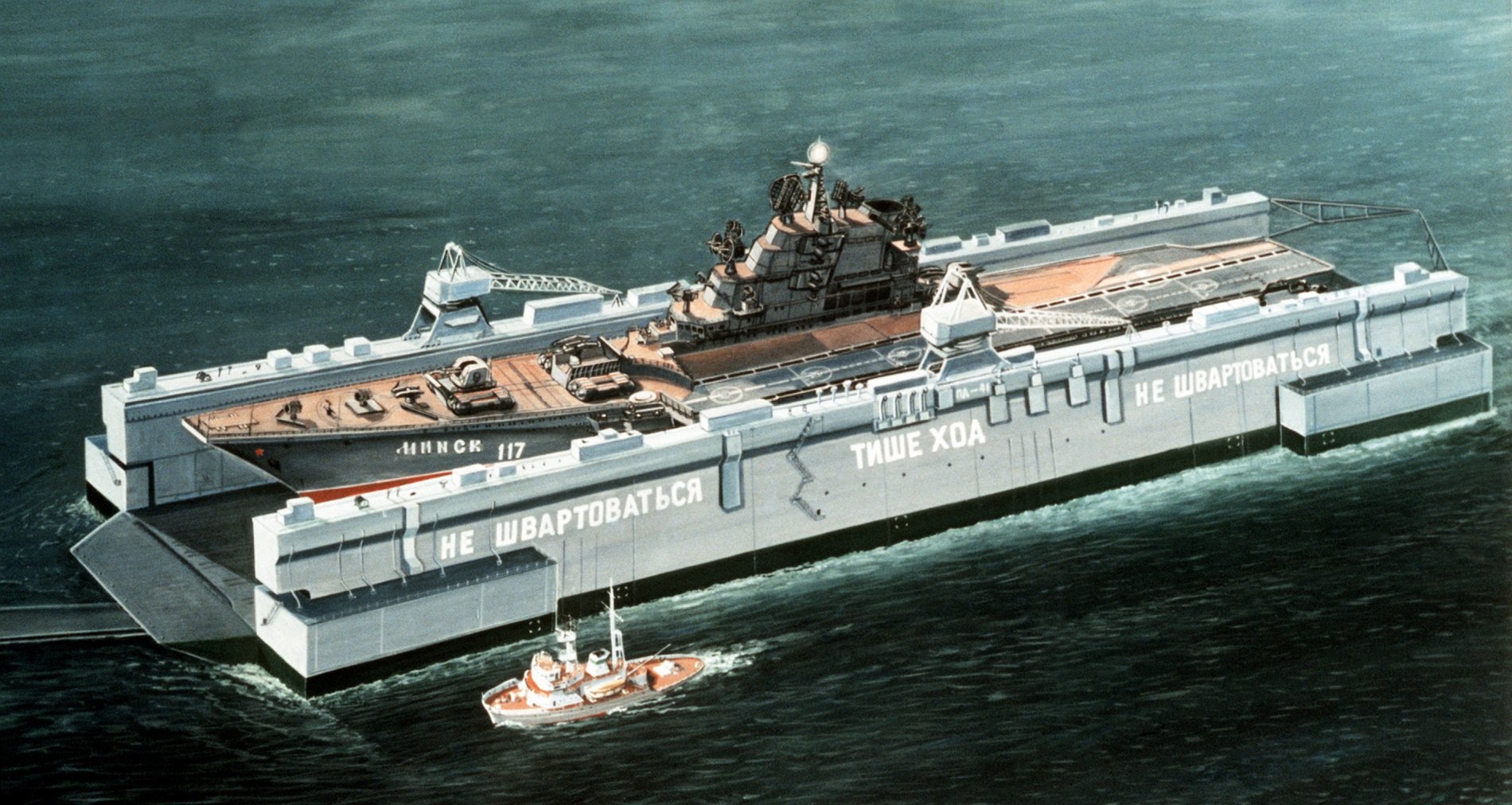How Russia's Kiev-Class 'Aircraft Carrier' Ended Up Rotting Away in China
The Soviet-era Minsk aircraft carrier, a hybrid warship designed for the Cold War, is now a relic rotting in a closed theme park in Nantong, China.
Summary and Key Points: The Soviet-era Minsk aircraft carrier, a hybrid warship designed for the Cold War, is now a relic rotting in a closed theme park in Nantong, China.

-Built as part of the Kiev class, these "heavy aviation cruisers" were armed with powerful missiles and aircraft but were never as effective as their American counterparts.
-The Minsk, sold to China and displayed in the defunct "Minsk World" amusement park, now sits abandoned along the Sutong Yangtze River Bridge, its historical significance overshadowed by its current dilapidated state.
The Soviet-era Minsk aircraft carrier is hardly deserving of the designation. Unlike the hefty, flat-decked warships that function as floating airbases, this ship, built as part of the former USSR’s Kiev class, is more of a cruiser-carrier hybrid. In fact, Minsk was really built to fulfill the Soviets’ need for a sea-based missile platform during the Cold War. Despite the carrier’s armament-lugging capabilities, its overall effectiveness was sorely limited. Today, the Kiev class warship is rotting away in a China-based theme park that is now closed.
Introducing the Kiev-Class
Designed to rival American-made counterparts like the Kitty Hawk vessels, Kiev-class ships were specifically designated as “heavy aviation cruisers” when first introduced. Their layout was in part derived from a previous proposal – the Oreo full-deck carrier.
An angled flight-deck took up roughly two-thirds the length of the ships’ total deck, while the rest was dedicated to surface-to-air and surface-to-surface missiles.
Each ship in this class was constructed at the Ukraine-based Nikolayev South Shipyards, the primary Soviet manufacturer of large surface warships.
Each was equipped with eight SS-N-12 “Sandbox” anti-ship missiles that could carry a 2,000 pound high-explosive warhead or a 250 kiloton nuclear warhead. In terms of aircraft, the Kiev ships had launchers for about a dozen Yak-38 Forger jump jets and Kamov Ka-25/27/29 helicopters.
In total, the USSR built four Kiev-class carriers prior to the end of the Cold War. The first two ships in the class, Kiev and Minsk, were sold to China as museums. The third Kiev ship, Novorossiysk, was ultimately scrapped.
The final vessel in this class, Admiral Gorshkov, remains in active service with the Indian Navy as INS Vikramaditya.
The Minsk Carrier’s Current Whereabouts
The carrier is now positioned along the Sutong Yangtze River Bridge in Nantong, China. Previously, the ship functioned as a relic in another Chinese amusement park in Shenzhen. When the aptly titled “Minsk World” opened in the early 2000s, the Kiev-class carrier was displayed alongside Chinese Q-5 Fantan combat jets and Soviet-era MiG-27 and MiG-23 swing-wing jets.
According to The War Zone, “Inert weapons, or mock-ups thereof, including missiles, bombs, and torpedoes, as well as other Soviet militaria were also displayed. Exhibits covering the Chinese military were also added. As seen in the video below, song-and-dance numbers were also regularly held at indoor and outdoor stages installed on the ship.”

Within six years of opening, however, Minsk World went bankrupt and officially closed its doors. Since this bizarre amusement park shut down, the Soviet-era cruiser has continued to rot away in the same man-made lagoon.
About the Author: Maya Carlin, Defense Expert
Maya Carlin, National Security Writer with The National Interest, is an analyst with the Center for Security Policy and a former Anna Sobol Levy Fellow at IDC Herzliya in Israel. She has by-lines in many publications, including The National Interest, Jerusalem Post, and Times of Israel. You can follow her on Twitter: @MayaCarlin.
All images are Creative Commons.


